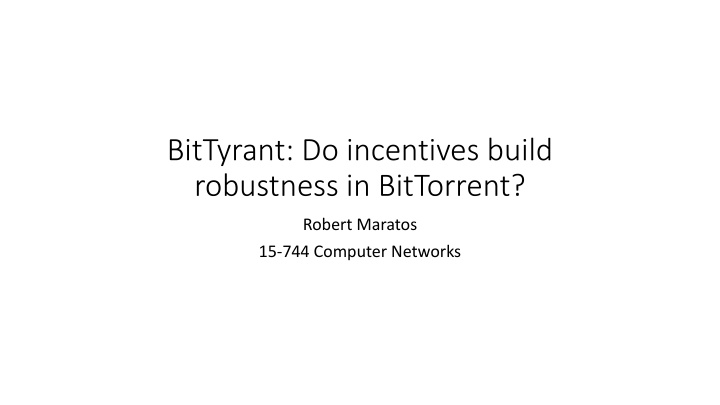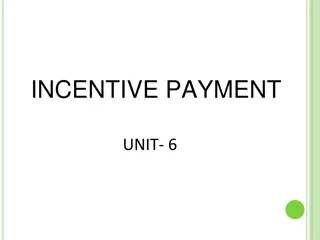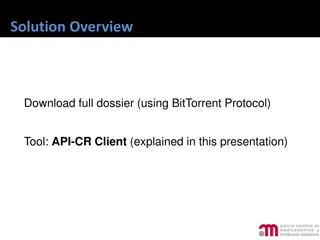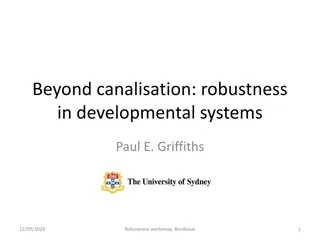Do Incentives Build Robustness in BitTorrent?
This study explores the impact of incentives on the robustness of the BitTorrent protocol, focusing on strategies like Tit-for-Tat and BitTyrant. It delves into active set selection, how new users start downloading, and research findings on live BitTorrent swarms. The analysis questions the effectiveness of Tit-for-Tat incentives in creating system robustness and proposes alternative strategies utilized by BitTyrant to maximize network performance.
Download Presentation

Please find below an Image/Link to download the presentation.
The content on the website is provided AS IS for your information and personal use only. It may not be sold, licensed, or shared on other websites without obtaining consent from the author.If you encounter any issues during the download, it is possible that the publisher has removed the file from their server.
You are allowed to download the files provided on this website for personal or commercial use, subject to the condition that they are used lawfully. All files are the property of their respective owners.
The content on the website is provided AS IS for your information and personal use only. It may not be sold, licensed, or shared on other websites without obtaining consent from the author.
E N D
Presentation Transcript
BitTyrant: Do incentives build robustness in BitTorrent? Robert Maratos 15-744 Computer Networks
Tit for Tat BitTorrent s fairness strategy Encourages users to upload chunks of the file to receive a faster download in return Meant to prevent free loaders
BitTorrent Active Set Selection Active set = set of peers to send torrent data to, called unchoked Determined by rate-based TFT algorithm based on how much the peer sends to you and other peers Send to peers which you got the most data from in a time period
How do new users start downloading? During every active set calculation, a few peers are randomly chosen, optimistically unchoked Allows new peers with potential to be introduced to a swarm Will be removed from the active set if they don t impress, choked
Researching Live BitTorrent Swarms Most popular torrents can be joined by anyone Connect to as many swarms and peers as you can and then measure their bandwidth capacity Paper was able to observe 301,595 IP addresses over 48 hours in 2006
Observations Difficult for high bandwidth peers to find other high bandwidth peers Once upload bandwidth passes a certain point, chance of , you are guaranteed to get a download Any extra upload bandwidth is extra , altruistic
Do TFT incentives create robustness? Robustness = system performance cannot be strategically manipulated by users No majority of BitTorrent performance comes from altruism from high bandwidth peers, not from TFT Strategies utilized by BitTyrant: Maximize reciprocation bandwidth per connection Find peers who give the most when you give the least Maximize number of reciprocating peers Add as many peers as possible until it is no longer beneficial Deviate from equal split Don t evenly divvy up bandwidth, base it on how much you get from each peer
Results for a Single Strategic Peer BitTyrant client joined popular streams for large files Median download is 1.72 times faster than regular BitTorrent client A small number of downloads were smaller because of the randomness involved in choosing initial peers
What if everyone uses BitTyrant? Strategic vs Strategic and Selfish If everyone is strategic, high capacity peers need many connections and increase overall swarm bandwidth making downloads faster If everyone is selfish, low bandwidth peers can t benefit from extra altruism and overall download performance decreases
BitTyrant is 10 Years Old It could run but downloading an Ubuntu ISO didn t seem to work























